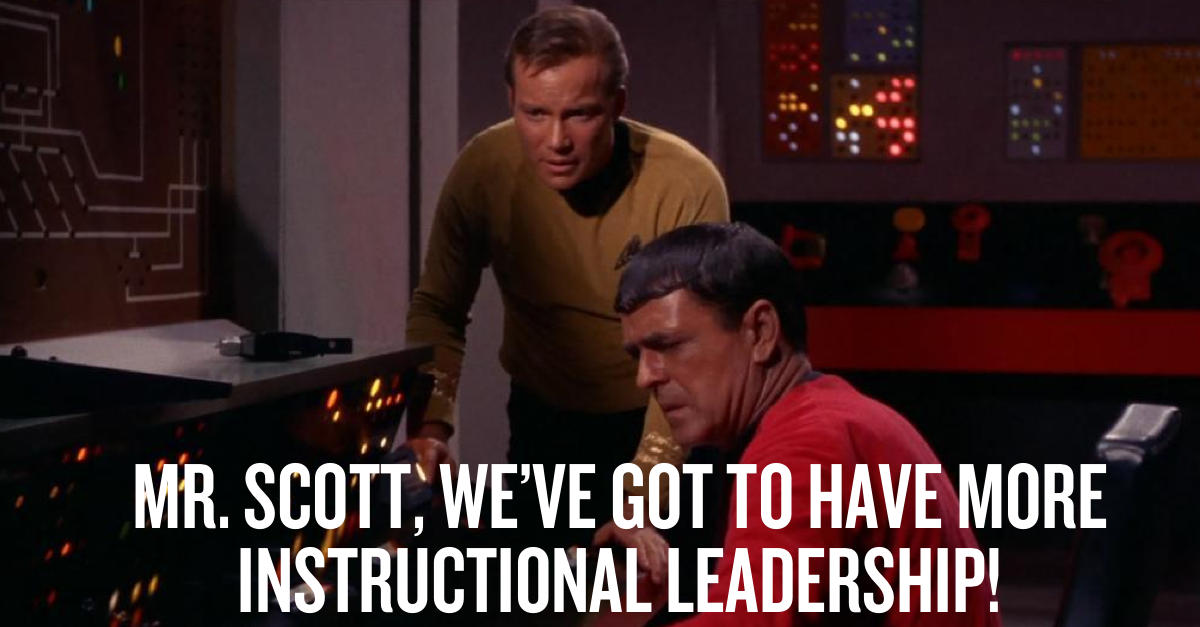Let's begin with a definition: an organization's capacity for instructional leadership is its ability to make and implement operational and improvement decisions.
The reason you're the bottleneck for much of what happens in your school is that you're the only one who can make certain kinds of decisions…perhaps too many of the decisions that need to be made.
The solution, of course, is distributed leadership—creating more leaders who can do the work that you're currently doing all by yourself.

Distributed leadership is powerful, but hard to manage well. Let's take a look at why distributed leadership is uniquely challenging.
The Challenges of Distributed Leadership
Distributed leadership is much more than delegation. Delegation is fairly straightforward:
- Decide that something needs to be done by someone else
- Tell them what to do and how to do it
- Make sure they do it, and provide guidance as needed
Pretty simple, right? But creating more leadership isn't merely a matter of delegation; you're still the bottleneck, because you still play a challenging and central role: decision-maker.
We need to delegate not just discrete tasks, but the decisions themselves. And that's where we can get into hot water.
It's easy to delegate certain types of decisions to people with titles that seem to come with the authority that those decisions require. If you have an assistant principal, no one will be surprised or bothered if you fully delegate decisions about student discipline or transportation.
Yet the real power of distributed leaderships comes from involving teachers, especially in decisions that directly affect teaching and learning.
But will handing over decision-making authority to teachers reduce the effectiveness of principal leadership? When we share the decision-making aspects of leadership, what happens to our own authority? Does it create chaos and confusion?
The research is encouraging:
“Principals may be relieved to find out, moreover, that their authority does not wane as others’ waxes. Clearly, school leadership is not a zero-sum game. ‘Principals and district leaders have the most influence on decisions in all schools; however, they do not lose influence as others gain influence,’ the authors write.”
—The School Principal As Leader: Guiding Schools To Better Teaching And Learning, quoting Learning From Leadership: Investigating the Links to Improved Student Learning: Final Report of Research Findings, Karen Seashore Louis, Kenneth Leithwood, Kyla L. Wahlstrom and Stephen E. Anderson, University of Minnesota and University of Toronto, 2010. (emphasis added)
So we don't have to worry about having less influence when we build greater capacity for instructional leadership in our organizations.
But we do need to address potential confusion about who's really in charge, and why not everyone gets a say in everything.
Obnocracy: The Pitfalls of Open Discussion
Involving teacher-leaders in school-level decision-making doesn't mean turning your school into a direct democracy where all issues are decided by consensus or whole-staff vote. Nor does it mean that every issue is discussed in faculty meetings until everyone is satisfied.
Turning decision-making over to the “consensus” of a staff discussion is a failure of leadership, pure and simple. When unmoderated discussion becomes the way decisions are made, it's not distributed leadership. It's what I call obnocracy.
Simply put, in a group discussion, the most obnoxious and outspoken person usually has the most power. We'd never choose this form of decision-making on purpose, but I've seen it play out time and time again in schools, and it's not pretty.
Everyone wants a voice, and everyone deserves a voice in some way for many decisions, but open discussion and obnocracy don't serve adult or student needs well.
Instead, we need a structure for making decisions. We need a decision matrix.
Developing A Decision Matrix
A Decision Matrix clarifies three sets of agreements for various types of decisions:
- Decisional Roles: Who makes the call?
- Consultation Methods: How do we talk with one another about the decision?
- Decision Methods: How do we reach final agreement?
The decisional roles define decisional authority:
- The Decision Owner (DO) is responsible for ensuring that the decision is made, but may or not be the decision-maker
- The Decision Maker (DM) makes the call, and may be an individual or a group
- A Consulted Stakeholder (CS) provides input before the decision is made
- A Represented Stakeholder (RS) has a voice through a designated representative
- A Notified Stakeholder (NS) is kept in the loop, but not always before the decision is made
- Non-Party (NP) stakeholders may be affected by the decision, but are not directly involved or notified
Find out more about the Decision Making Matrix and how you can create a Decision-Making Handbook in our course High-Performance Decision Making.
